
The block research group (BRG) at ETH Zurich and Zaha Hadid Architects, in collaboration with other partners from the industry, have developed Striatus - a 3D concrete-printed arched bridge entirely without any reinforcement. The traditional techniques of master buildings with highly advanced computation design, robotic manufacturing, and engineering technologies are used to design the 16×12-meter footbridge structure. The project is displayed at the Giardini Della Marinaressa during the Venice Architecture Biennale until November 2021. Read more about this first-of-its-kind project below at SURFACES REPORTER (SR):
Also Read: CEPT Alumnus Builds Germany’s First 3D Printed House; Bags German Innovation Award 2021 | Beckum | SR News Update
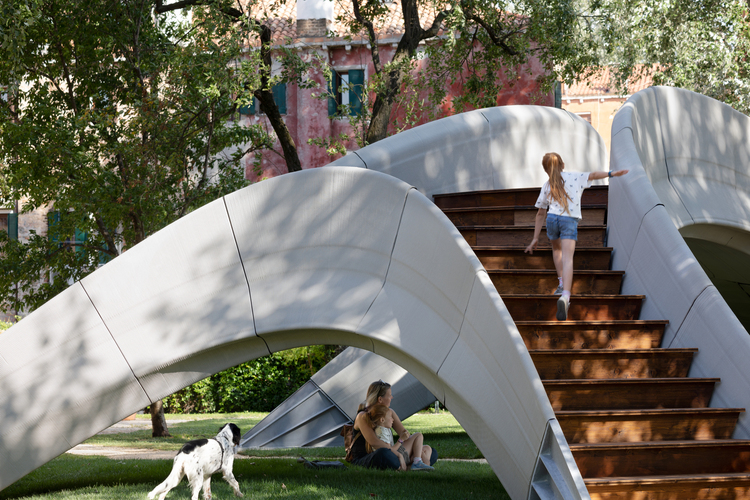
The architects and designers at ETC Zurich and ZHA, in association with computation and design group (ZHACODE), Holcim, and incremental 3D (in3D), have designed the 3D printed footbridge. 3D printing is a booming industry showing how it can help create load-bearing concrete structures that need significantly fewer materials with no mortar or steel reinforcement requirement. The project is a prototype of how 3D printing facilitates the creation of heavy structures in less time.
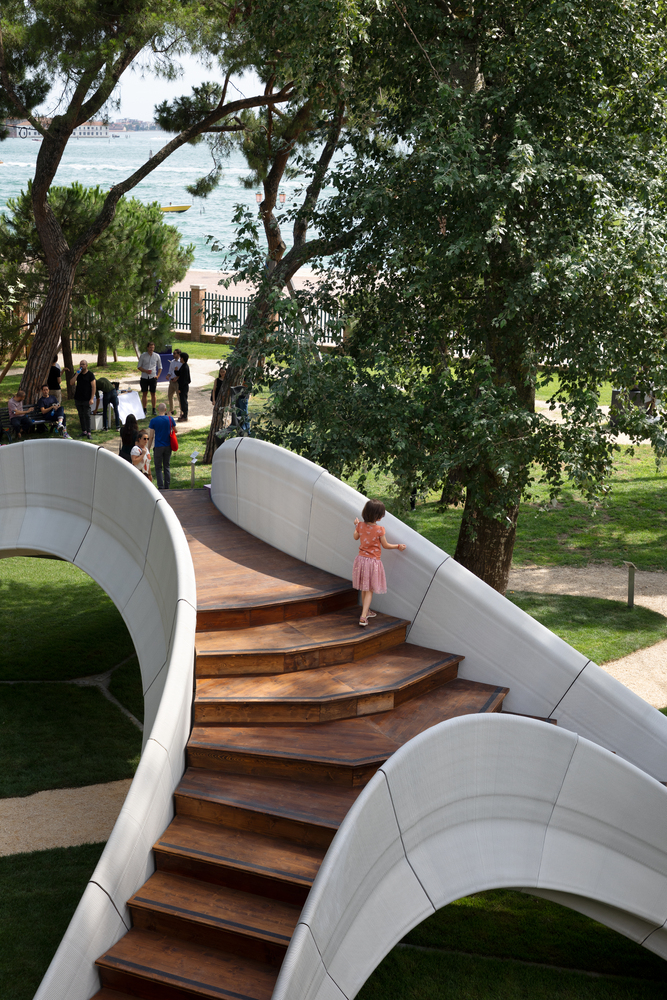
No Steel Reinforcement or Mortar
The bridge is composed of 3d-printed blocks that are assembled without any mortar.
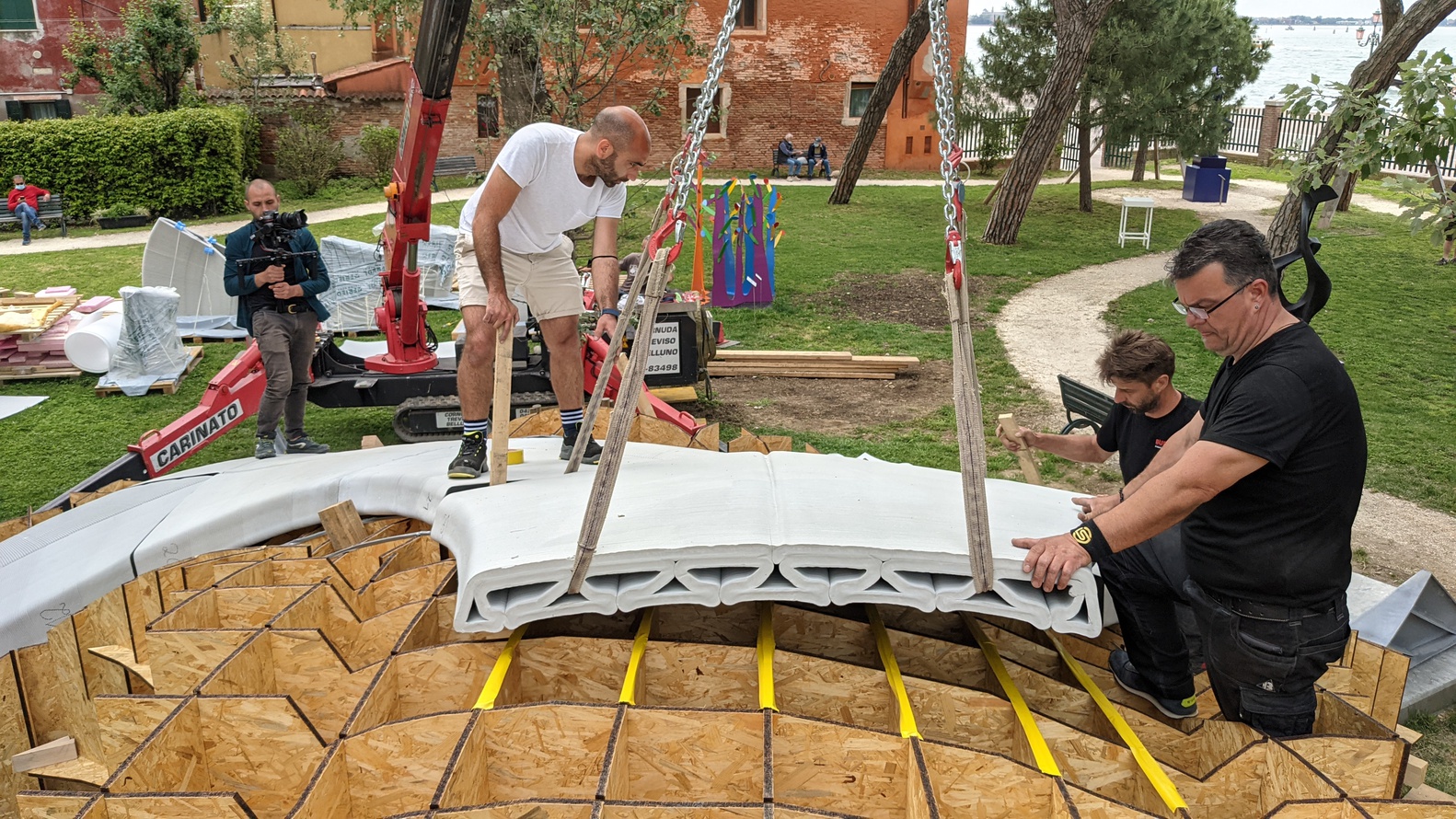
Thousands of new constructions are happening in the world using reinforced concrete that causes enormous amounts of carbon dioxide emissions. And the latest IPCC report also warns that excessive carbon emissions may have deteriorating effects on the environment. The use of steel reinforcement and cement is particularly problematic in this regard.
Also Read: Studio Mortazavi Designs Worlds First 3D Printed School in Madagascar | Thinking Huts
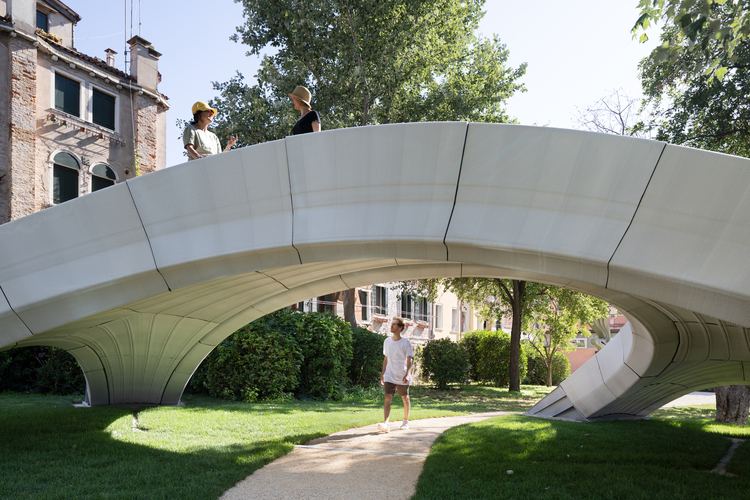
However, this 3D concrete printed structure was built keeping in mind the environmental concerns, and thus it helps reduce the use of both steel and cement.
Construction Process
The project name "Striatus" echoes the structural logic and the construction process behind the project. The design team used an additive process to create the bridge featuring a concrete-block arch like traditional masonry bridges.
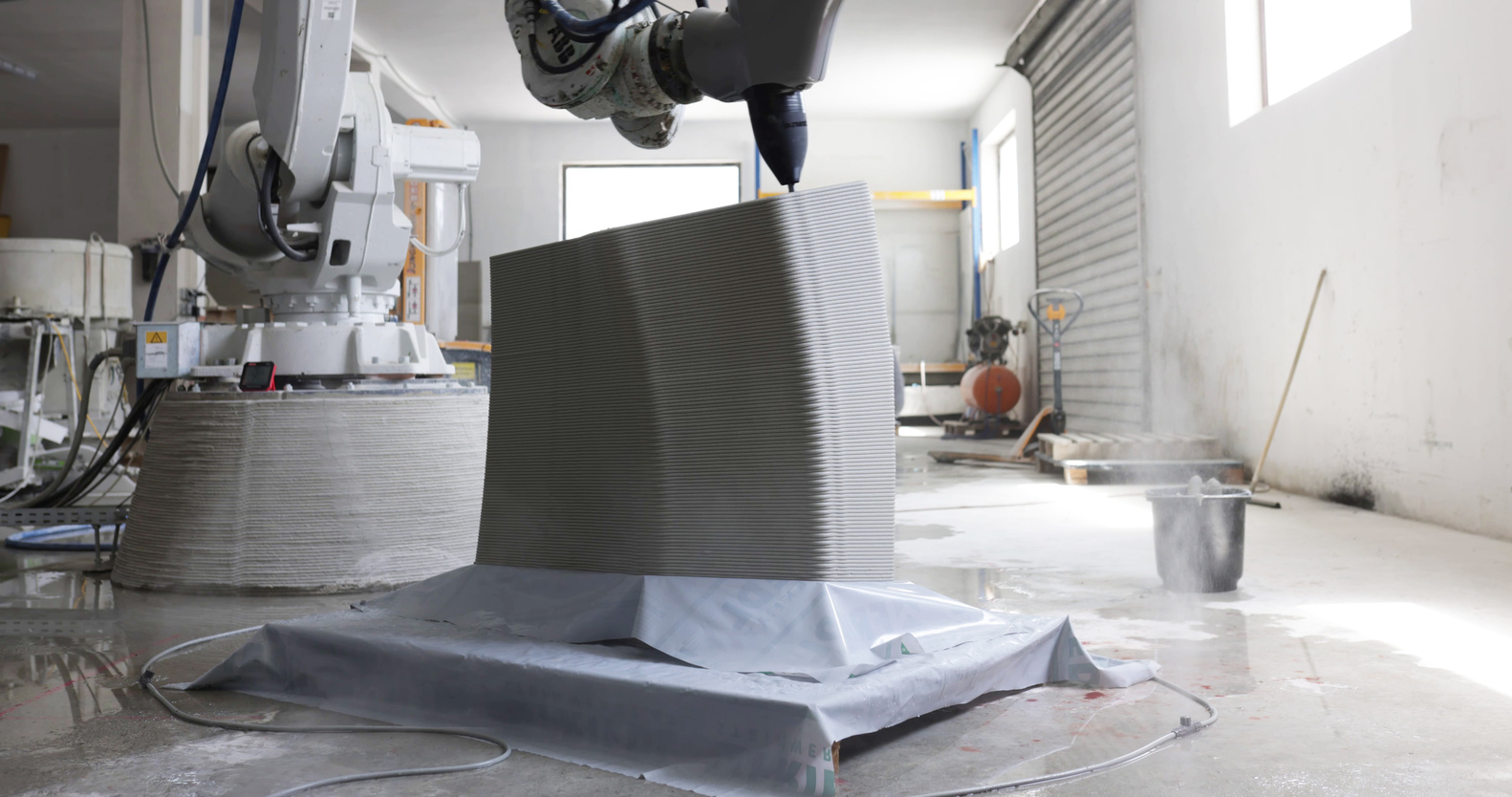
The researchers created a unique type of concrete that, unlike the traditional concrete, is not applied horizontally instead at specific angles orthogonal to the flow of compressive forces. "Concrete is printed in layers orthogonal to the main structural forces to create a "striated" compression-only funicular structure that requires no reinforcement."
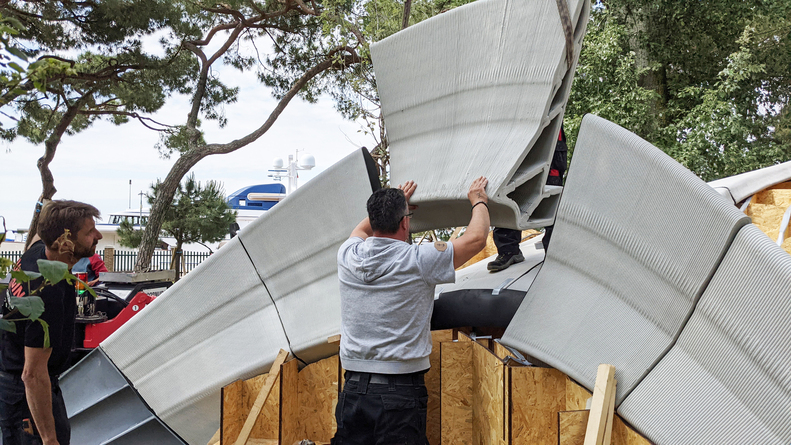
The printed layers in the concrete blocks are nicely pressed together, without post-tensioning or reinforcement. The unique compression-only structure lets the compressive forces go to the base, which are then fixed together on the ground. The unique geometry gives stability to the dry-assembled construction. Holcim has designed the special concrete ink for the 3D printer.
Also Read: Casa COVIDA is a 3D Printed Home Made From Sand, Straw, Mud, Clay And Other Organic Materials | California | Emerging Objects
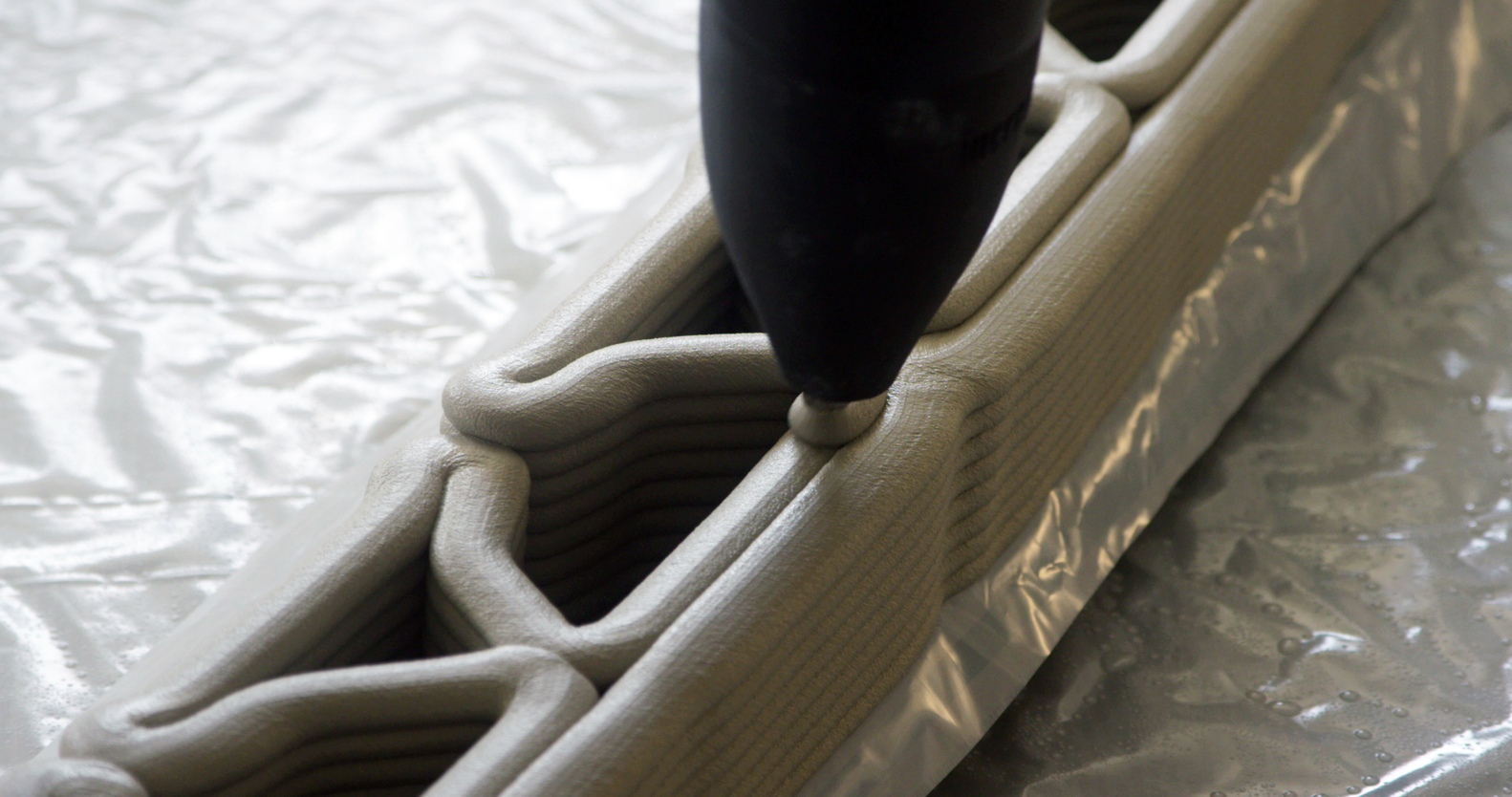
Sustainable Digital Concrete
Striatus embodies the 3 Rs of the circular economy- reduce, reuse and recycle. Minimal material is used in the making of the project. This process ensures the use of material only where its structurally important without generating waste.
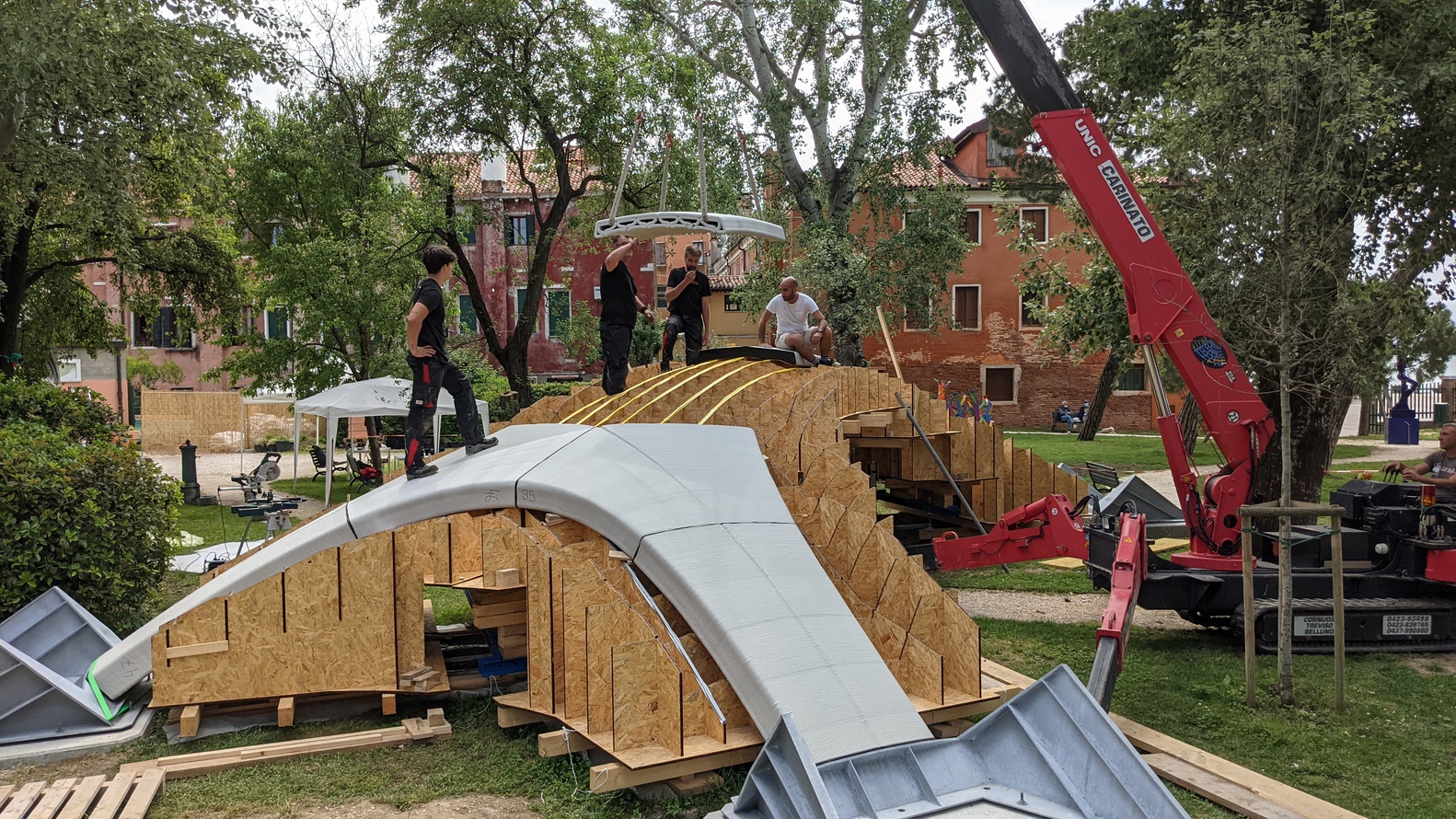
Since the 3D concrete bridge does not require mortar, the concrete blocks can be disassembled and reassembled again at a different location. If the construction is no longer needed, the structures materials can be removed and recycled, making the entire project more sustainable. All the materials can be easily recycled with limited energy and cost. The recycling process is also simple as the structure does not contain any glue, reinforcements, or binders, so no materials sorting is required.
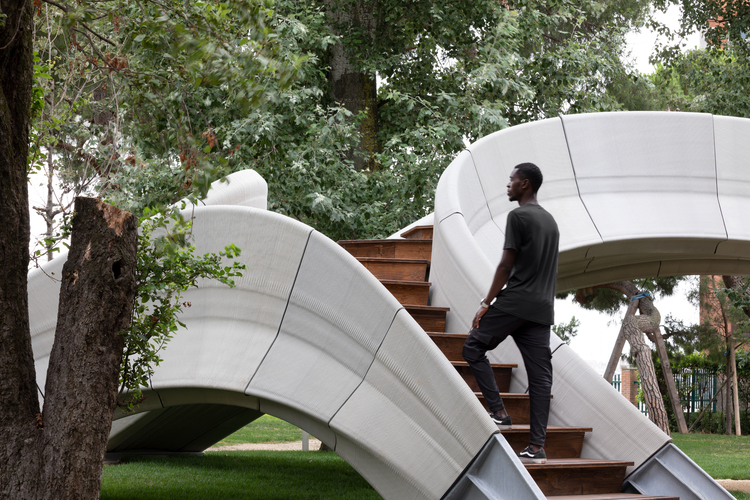
The 3D concrete printings allow the design team to mix the traditional vaulted construction principles with digital concrete fabrication.
Project Details
Project Name: Striatus
Architecture firm: Zaha Hadid Architects Computation and Design Group (ZHACODE), Block Research Group (BRG) at ETH Zurich, incremental3D, Holcim
Location: Giardino della Marinaressa, Venice, Italy
Length: 3D-printing path lengths (per block) = 602 m - 1754 m
Design team: ZHACODE: Jianfei Chu, Vishu Bhooshan, Henry David Louth, Shajay Bhooshan, Patrik Schumacher. ? ETH BRG: Tom Van Mele, Alessandro Dell’Endice, Philippe Block
Design year: 2021
Completion year: 2021
Structural engineer: ETH BRG: Tom Van Mele, Alessandro Dell’Endice, Sam Bouten, Philippe Block
Construction: Bürgin Creations: Theo Bürgin, Semir Mächler, Calvin Graf, ETH BRG: Alessandro Dell’Endice, Tom Van Mele
Photography: Studio Naaro, Tom Van Mele, Alessandro Dellendice, in3d
Status: Built
Source: https://www.striatusbridge.com/
More Images
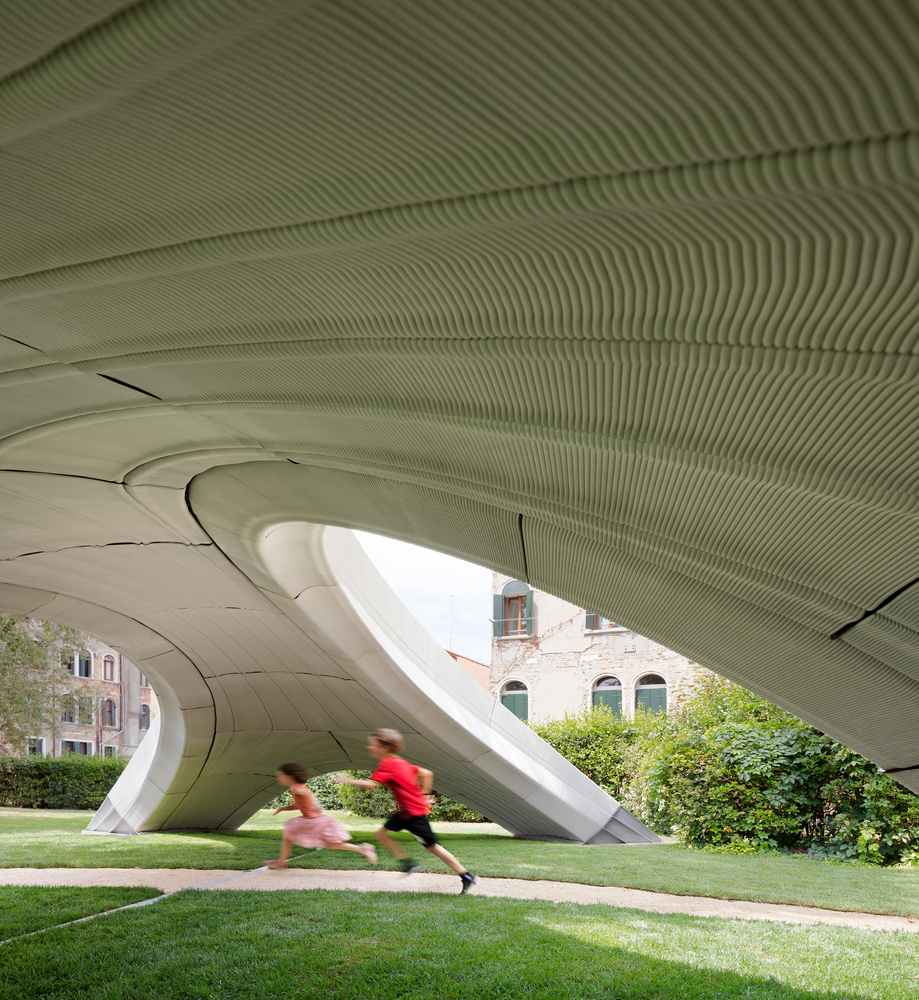
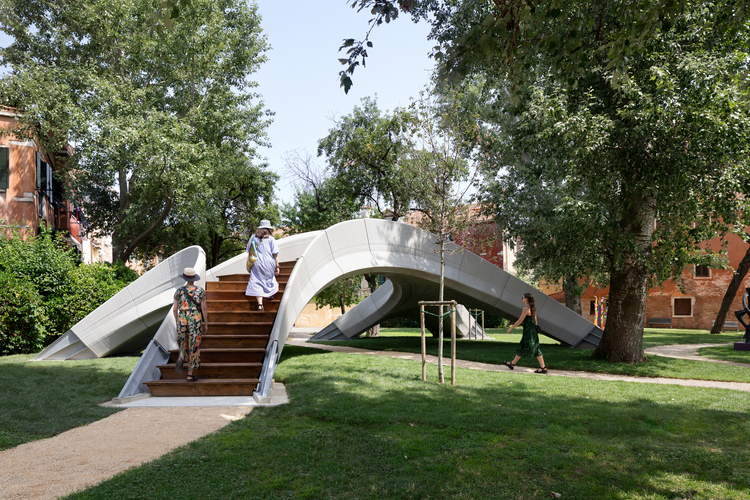
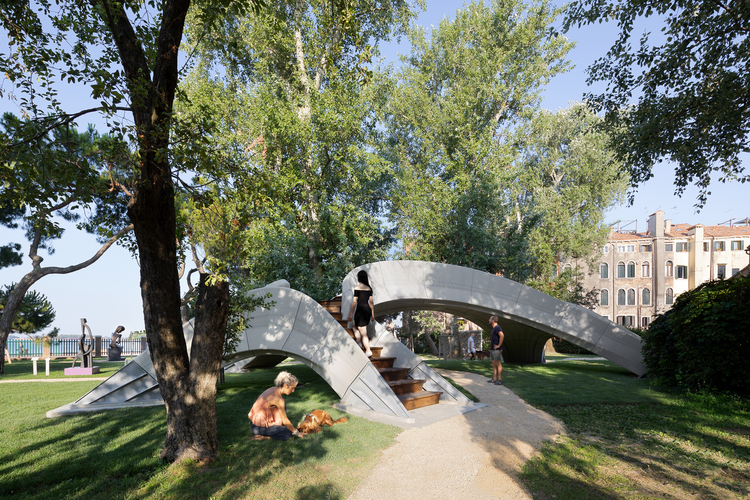
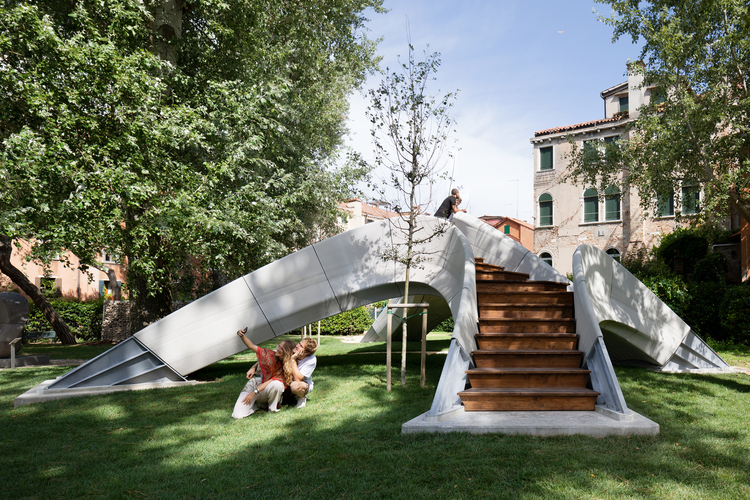
Keep reading SURFACES REPORTER for more such articles and stories.
Join us in SOCIAL MEDIA to stay updated
SR FACEBOOK | SR LINKEDIN | SR INSTAGRAM | SR YOUTUBE
You may also like to read about:
Indias first 3D printed House by IIT-M alumni | SR News update
First 3D-Printed Building in India, Made Using Local Building Materials
7 Popular 3D Modelling Software in Architecture | Surfaces Reporter
And more…